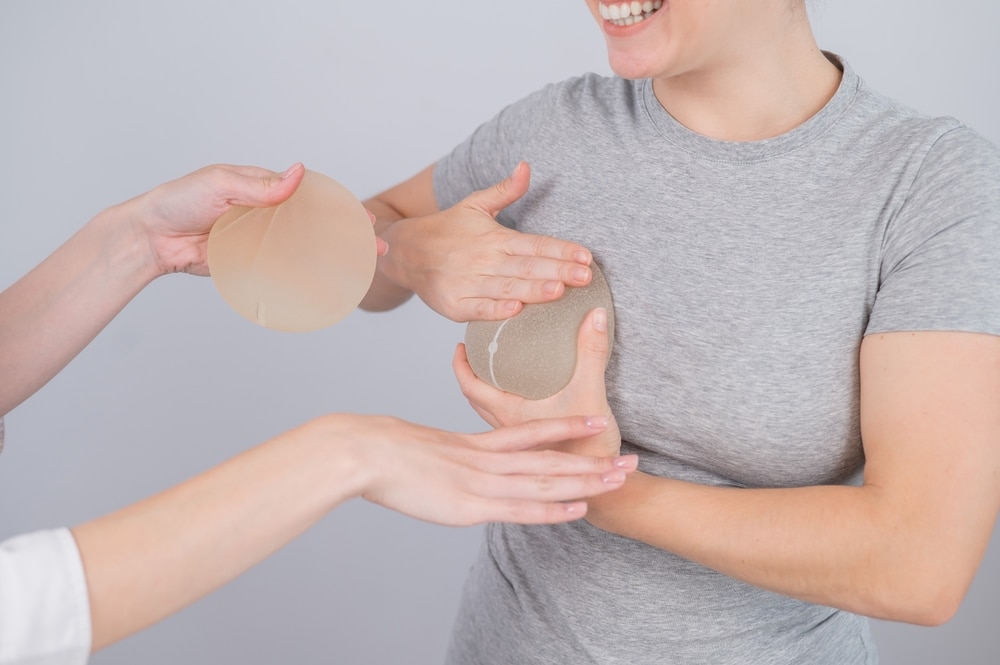As the years roll by, our bodies undergo various changes, and for those who have had breast augmentation, the passage of time can raise questions and considerations. If you find yourself at the ten-year mark with breast implants, it’s only natural to wonder, “Now what?”
Get Regular Check-Ups
Just like any other medical procedure, routine check-ups are crucial for monitoring the health of your breast implants. Schedule regular appointments with your plastic surgeon to assess the condition of your implants and ensure they are functioning well. These check-ups also allow for the detection of any potential issues early on.
Imaging Studies
In addition to physical examinations, your plastic surgeon may recommend imagining studies such as mammograms or ultrasounds. These tests can help identify any changes or complications with your breast implants and ensure your overall breast health is maintained.
Consider Implant Longevity
While breast implants are not guaranteed to last a lifetime, they often have a long lifespan. However, it’s essential to be aware that over time, implants may experience wear and tear, potentially leading to issues like leakage or rupture. Understanding the lifespan of your particular implants and discussing replacement options with your surgeon is a proactive approach to maintaining your breast health.
Stay Informed
Advancements in medical technology and breast implant materials continue to evolve. Stay informed about any updates or changes in the industry, as new options that were not present when you initially underwent breast augmentation may be available. Knowledge empowers you to make informed decisions about your health and well-being.
Listen to Your Body
As with any aspect of health, paying attention to your body is crucial. If you experience any discomfort, changes in breast shape, or unusual symptoms, don’t hesitate to consult with your plastic surgeon promptly. Early intervention can often address concerns before they escalate.
Explore Revision Options
At the ten-year mark, some individuals might choose to explore breast implant surgery. This could involve replacing implants, adjusting size, or addressing any issues that may have arisen over the years. Consult with your plastic surgeon to discuss your goals and explore the options available to you.
Possible Risks From Ten-Year-Old Implants
Breast implants are designed to be durable; it’s important to acknowledge that, like any medical device, they can pose risks as they age.
Rupture or Leakage
Over time, breast implants can experience wear and tear, leading to the risk of rupture or leakage. This risk increases with the age of the implants, especially for those with silicone implants.
Capsular Contracture
Capsular contracture occurs when the scar tissue that naturally forms around the implant becomes thickened and tight. This can result in changes in breast appearance, discomfort, or pain.
Implant Malposition
As the tissues and structures around the breast change over time, implants may shift or become malpositioned. This can affect the aesthetic outcome of the augmentation and may require corrective surgery to reposition the implants.
Visible Wrinkling or Rippling
With aging implants, the outer shell may develop visible wrinkles or rippling, especially in cases of saline implants. This can impact the cosmetic appearance of the breasts and can be a reason some individuals choose to explore implant revision surgery.
What To Do After Ten-Year-Old Implants: Key Takeaways
This is a question that Dr. Somenek and Dr. Pittman get on a daily basis. Women with aging implants are often confused about what they should be doing to care for their implants and are often concerned with when the implants will need to be exchanged or removed. There are a lot of “urban myths” surrounding the long-term safety and care of breast implants. Below are three takeaway tips if you have implants of any age:
- SELF-BREAST EXAM – All women, regardless of their implant status, should be doing a monthly self-breast exam. Women with implants should be specifically aware of the hardening of their implants after about ten years, implants that are changing in shape or position, and/or implants that are becoming increasingly more uncomfortable. All of these could be signs of capsular contracture.
- BREAST IMAGING – Women should get a yearly mammogram starting at age 40, and women with a strong family history of breast cancer may need to have their first mammogram earlier. However, women with breast implants should get a breast MRI about every five years to look for an implant rupture.
- FOLLOW–UP WITH A BOARD-CERTIFIED PLASTIC SURGEON – The most important thing for women with implants is that you should be seeing a board-certified plastic surgeon on a regular basis. Problems with implants, even a rupture, can often be diagnosed with a good physical exam by a plastic surgeon with extensive breast implant experience. Additionally, there is new implant technology that you may be interested in learning about during your visit. For example, women who had silicone breast implants placed ten years ago most likely had 4th-generation breast implants. The new 5th-generation breast implants, also known as “gummy-bear” implants, are made of a more cohesive silicone. As a result, we see lower rupture rates and lower rates of capsular contracture associated with the newer implants. To read more about the safety of breast implants, click here.
Dr. Somenek and Dr. Pittman often see patients who have changing breast goals after ten years. Women who had breast augmentation in their 20s may not want the same-sized breasts as they get older. It is not uncommon to downsize implants or remove the implants altogether. The decision to remove implants is a personal one. Read more about options for breast implant removal.
There are other reasons, aside from problems with the hardened implants, that women may consider a revision breast augmentation. After ten years, many women have had significant changes in their breast tissues (breasts start to droop off of the implant, especially after breastfeeding) and will benefit from revision breast augmentation or a breast lift with the exchange of implants.
Schedule Your Ten-Year Check Up
In summary, if you have implants that are ten years old or older, it’s time to consult with a board-certified cosmetic breast surgeon to discuss your options. It may be that your implants are just fine, and nothing needs to be done. But you owe it to yourself to know your options. Call 202-810-7700 to book your consultation at Somenek+Pittman MD: Advanced Plastic Surgery.


